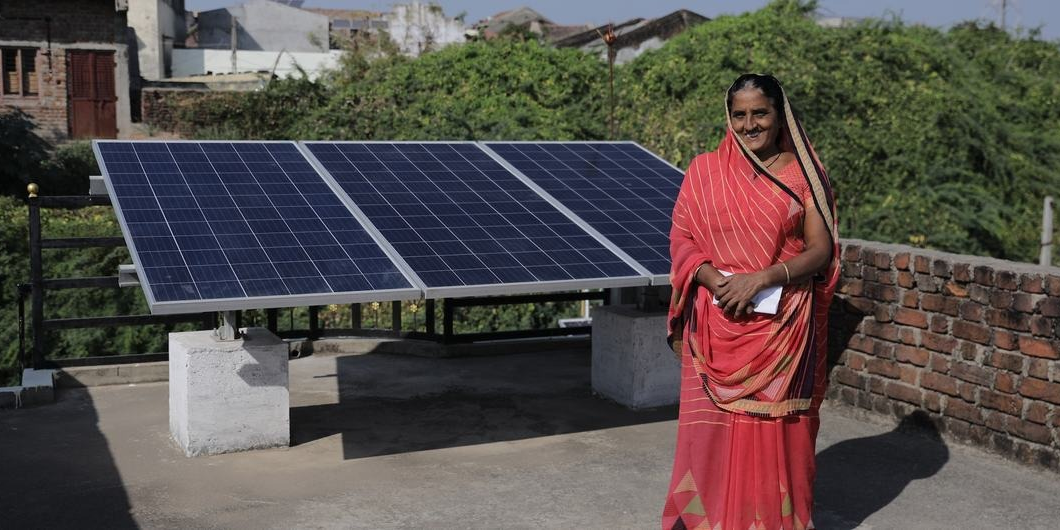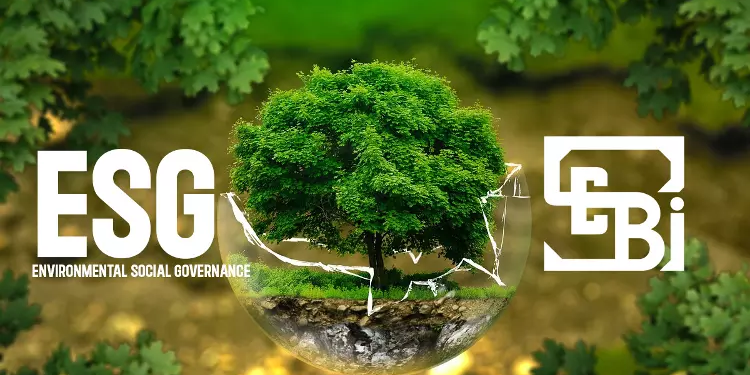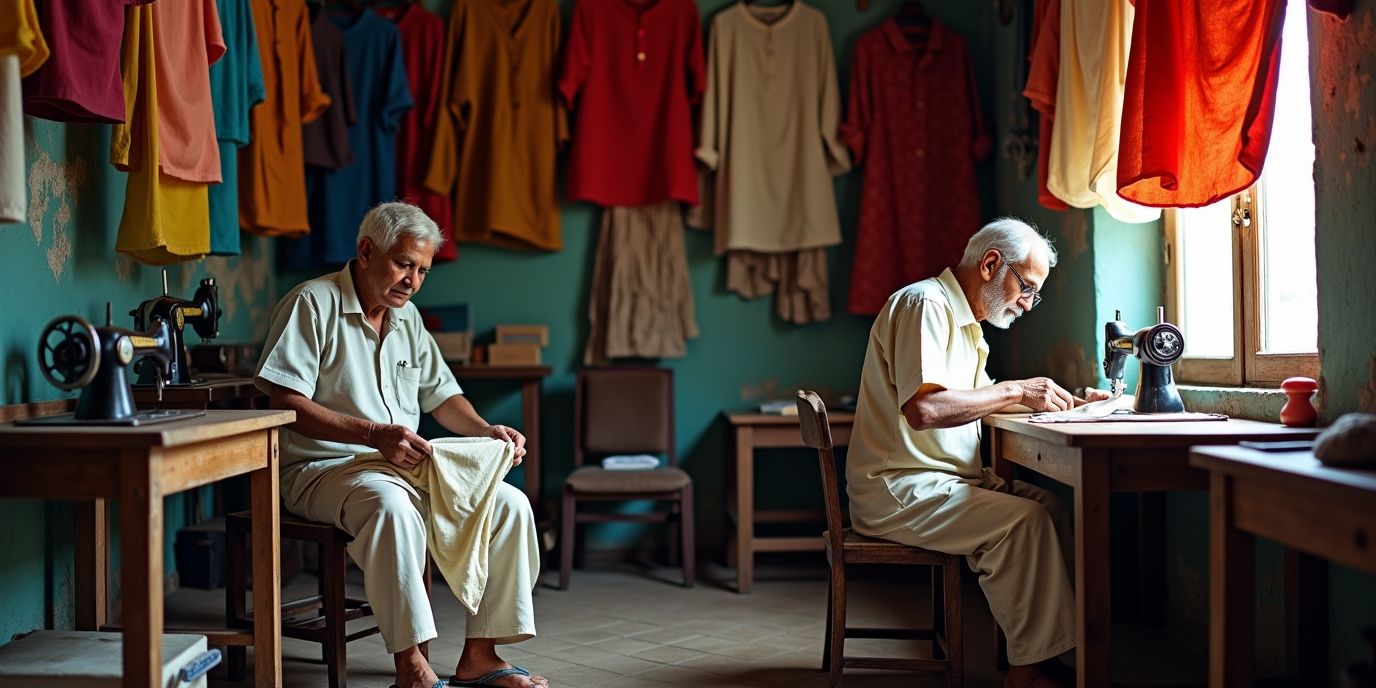The Green Uprising: How India's Young Innovators Are Rewriting the Rules of Climate Action

Picture this: A 24-year-old college dropout from Kolkata stands in front of a room full of venture capitalists, not pitching another food delivery app, but a machine that turns stubble, the same farm waste that chokes Delhi’s air every winter, into profitable carbon credits. The investors lean forward. This isn’t just another startup story. This is the sound of a generation refusing to inherit a burning planet.
Here’s what the headlines won’t tell you: while the world argues about climate deadlines, 420 million young Indians aren’t waiting for permission to build the future. These young people aren’t asking if solving the climate crisis is possible; young Indians are already doing so, one solar panel, one electric rickshaw, one biogas plant at a time.
The numbers should terrify you. India needs $10.1 trillion (~₹895.9 trillion) by 2070 to reach net-zero. The country faces water stress affecting 600 million people. Air pollution kills 1.67 million Indians annually. But here’s the twist: these same terrifying statistics have become the raw material for the world’s most innovative climate solutions.
This is the story of how desperation became inspiration.
Demographics Fuel Hope
Walk into any startup incubator in Bangalore or browse the winner’s list of India’s latest climate innovation challenges, and you’ll notice something remarkable: the average age of founders is dropping while ambition is soaring. India’s youth population of 420 million represents 29% of the nation. Young Indians aren’t just demographic statistics. This generation is a demographic weapon against climate inaction.
Unlike counterparts in Silicon Valley chasing the next billion-dollar app, these young Indians are chasing something different: a habitable planet. Young climate entrepreneurs measure success not just in rupees raised but in tons of CO₂ captured, in rural jobs created, in groundwater restored.
The shift is profound. As one policy researcher noted, 64% of India’s youth live in rural areas, places where climate change isn’t an abstract future threat but a present-day reality affecting families’ farms, village water sources, and economic prospects. For young rural Indians, climate action isn’t altruism; it’s survival entrepreneurship.
Turning Problems into Profit
Vidyut Mohan’s company Takachar has cracked a code that seemed impossible: making farmers money from the agricultural waste farmers used to burn. The solution is elegant in simplicity — machines that convert crop residue into sellable products — but profound in implication. Every ton of biomass processed prevents the air pollution equivalent of taking hundreds of cars off the road.
When Prince William handed Mohan the inaugural Earthshot Prize, the award wasn’t just recognition. The prize was global validation that solutions born in Indian villages could scale to solve global problems.
Neha Jain at Zerocircle looked at the mountains of plastic choking Mumbai’s beaches and saw opportunity where others saw only waste. Jain’s seaweed-based packaging doesn’t just replace plastic. The innovation employs coastal communities in Tamil Nadu and Gujarat while sequestering carbon. The Tom Ford Plastic Innovation Prize finalist represents a new breed of entrepreneur who understands that climate solutions must also be community solutions.
Ankit Agarwal’s Phool transforms another “waste” stream, temple flowers that would otherwise rot in the Ganges, into biodegradable incense and packaging. The circular economy isn’t just buzzword sustainability for these founders. Circular economics is business model innovation that turns every environmental problem into a market opportunity.
Technology Meets Tradition
What sets India’s young climate entrepreneurs apart isn’t just technological savvy. The difference is an ability to blend cutting-edge innovation with traditional wisdom. Consider Ather Energy’s founders, Tarun Mehta and Swapnil Jain, who didn’t just build electric scooters. The duo reimagined urban mobility. Ather’s AI-powered vehicles learn traffic patterns, optimize battery life, and integrate with smart city infrastructure while remaining affordable for middleclass Indian families.
The Ather Grid network, over 350 charging stations across 38 cities, represents more than infrastructure. The network is proof that Indian innovators can leapfrog Western models, building better, faster, more inclusive systems from the ground up.
In agriculture, startups like Banyan Nation are applying blockchain technology to plastic waste management, creating transparent supply chains that track every bottle from collection to recycling. When the World Economic Forum named Banyan Nation a Technology Pioneer, the recognition acknowledged not just the technology but the transformative potential of applying digital tools to environmental challenges.
David Challenges Goliath
The funding landscape tells a story of David vs. Goliath, but David is winning, slowly. Climate technology startups raised $1 billion between 2017–2021 (not converted to INR), and while that’s a fraction of overall venture funding, the trajectory is accelerating. In 2024, cleantech secured 12.1% of growth-stage funding, marking a 5.4% increase in overall startup funding to $11.6 billion (not converted to INR).
Turning Problems into Profit Technology Meets Tradition David Challenges Goliath More importantly, the nature of funding is changing. Climate Angels, India’s largest climate-focused fund, represents patient capital willing to invest in longer development cycles. The emergence of specialized climate funds signals that investors are finally recognizing what young entrepreneurs already knew: the climate tech market isn’t just morally necessary; the market is financially inevitable.
Yet barriers persist. The 17% conversion rate from seed to Series A for climate startups — exact figure needs more direct source citation — remains below global averages. Hardwareintensive green innovations require more capital and longer timelines than software counterparts. For many young founders, the “valley of death” between proof of concept and commercial viability remains treacherous terrain.
Global Recognition Meets Local Impact
International awards are pouring in, but awards tell a deeper story about the global applicability of locally-rooted solutions. Takachar’s Earthshot Prize, Zerocircle’s Tom Ford Prize recognition, Banyan Nation’s WEF Technology Pioneer status: these aren’t just trophies. These honors are validation that solutions developed for Indian challenges can address global problems.
This recognition creates virtuous cycles. International visibility attracts global partnerships, which enable scaling, which generates more impact, which attracts more investment. Young Indian climate entrepreneurs are discovering that being local-first doesn’t mean being globally irrelevant; being local-first means being globally essential.
Communities Become Co-Creators
The most successful youth-led climate innovations share a crucial characteristic: these startups don’t just solve environmental problems, they strengthen communities. This isn’t accidental; community focus is strategic. These entrepreneurs understand that sustainability without social equity is neither scalable nor sustainable.
Take the Youth Co:Lab program’s 378 applications from 28 states. These aren’t just individual startups; these are community-embedded solutions. Rural youth are developing precision agriculture tools that help neighbors’ farms become more productive while using less water. Urban innovators are creating waste management systems that employ waste pickers while reducing landfill burden.
The collective action model is particularly powerful in India’s context. When individual innovation meets community deployment, impact multiplies exponentially. A single solar microgrid doesn’t just provide clean energy to one village; the microgrid becomes a model that spreads across districts, states, regions.
Policy Creates Tailwinds
Government support has evolved from skeptical tolerance to active encouragement. The Startup India initiative has created 17.28 lakh jobs since 2016, with an increasing proportion in sustainable sectors. NITI Aayog’s framework for sustainable development provides policy scaffolding for green innovation, while programs like Mission LiFE create market demand for sustainable products.
More crucially, India’s 2070 net-zero commitment has shifted the conversation from “if” to “how”. Young entrepreneurs aren’t just building businesses; entrepreneurs are building the infrastructure for India’s climate transition. The SDG India Index improvement from 41 to 61 between 2018 and 2023 reflects not just policy success but the cumulative impact of thousands of innovative interventions.
State governments are competing to attract green startups. 670+ districts now support startup ecosystems, creating opportunities beyond traditional metropolitan hubs. This distributed innovation model means climate solutions are being developed closer to the problems solutions solve, increasing both relevance and impact.
Notable Contributions: Transforming Climate Action
Beyond the celebrated entrepreneurs making headlines, a deeper ecosystem of innovation is reshaping how India approaches climate challenges. These contributions span across sectors and represent the breadth of youth-led climate action:
Agricultural Innovation: In Rajasthan, a 26-year-old engineer has developed a solar water purification system for schools in water-scarce regions, directly addressing both water scarcity and energy access. The system has been deployed across 47 schools, providing clean water to over 8,000 students daily.
Technology for Sustainability: In Kerala, a computer science graduate creates software that optimizes crop rotation for climate resilience, helping farmers adapt to erratic monsoons while maintaining productivity. The platform now serves 2,300 farmers across six districts.
Community-Based Solutions: In Assam, a young social worker builds community composting systems that turn organic waste into income for women’s self-help groups, creating both environmental and economic benefits. The model has been replicated in 34 villages, generating ₹2.4 lakh in monthly income for participating families.
Precision Agriculture Networks: Rural youth across multiple states are developing IoT-enabled soil sensors that provide real-time data on moisture, nutrients, and pH levels. These systems help farmers reduce water usage by 30% while increasing crop yields by 18%.
Urban Waste Solutions: Young innovators in tier-2 cities are creating app-based platforms that connect households with local recycling units, ensuring proper waste segregation while creating livelihood opportunities for informal waste collectors.
Energy Access Projects: Solar entrepreneurs in remote areas are developing micro-financing models that make clean energy accessible to low-income households, with payment plans aligned to agricultural income cycles.
These aren’t unicorn startups; these are utility innovations — solutions so practical, so embedded in daily life, that innovations become invisible infrastructure. Founders won’t grace magazine covers, but solutions might prevent water wars, reduce urban air pollution, or help farming communities adapt to erratic monsoons.
Notable Contributions: Transforming Climate Action The media narrative focuses on funding and exits, but the real story is impact and integration. How many farmers adopted regenerative practices? How many communities gained energy independence? How many young people chose entrepreneurship over emigration because climate action became economically viable?
Transforming Anxiety into Agency
Something profound is happening in the emotional landscape of India’s youth. Climate anxiety, that paralyzing fear that grips young people globally, is being transformed into climate agency. Instead of feeling helpless about the future, young Indians are building that future.
Rebecca Solnit wrote that “hope is not a lottery ticket you can sit on the sofa and clutch, feeling lucky. Hope is an axe you break down doors with, in an emergency.” India’s young climate entrepreneurs embody this militant hope. Young entrepreneurs aren’t waiting for salvation; entrepreneurs are engineering salvation.
This shift from anxiety to agency is crucial. 68% of global youth report climate anxiety, but India’s young entrepreneurs are discovering that the antidote to despair is action, and the cure for helplessness is building solutions. When young entrepreneurs can measure impact in carbon sequestered or communities empowered, climate change becomes less an existential threat and more a design challenge.
Building Technology-Community Networks
The most innovative aspect of India’s youth-led climate movement isn’t any single technology; innovation is the integration model. These entrepreneurs understand that lasting change requires both technological innovation and social transformation. Entrepreneurs are building solutions that are simultaneously high-tech and high-touch, digitally native and community-rooted.
Consider precision agriculture startups that combine satellite data with farmer knowledge systems, or waste management platforms that integrate informal recyclers with formal supply chains. The innovation lies not in choosing between modern and traditional approaches but in synergizing approaches.
This integration model has global implications. As climate solutions need to scale across diverse contexts — urban and rural, developed and developing, high-tech and low-tech — India’s fusion approach offers blueprints for adaptive innovation.
Creating Infrastructure for Optimism
One number reveals everything about where this movement is heading: 51% of India’s recognized startups now come from Tier II and III cities. Climate innovation isn’t concentrating in a few metropolitan hubs. Innovation is distributing across the country. This geographic spread matters because environmental challenges vary dramatically across India’s diverse ecosystems.
Water scarcity solutions developed in Rajasthan differ from those needed in Kerala. Air pollution interventions for Delhi require different approaches than those for Pune. Distributed innovation Transforming Anxiety into Agency Building Technology-Community Networks Creating Infrastructure for Optimism means contextual solutions, which means higher adoption rates, which means greater impact.
This distributed model also democratizes opportunity. Young people don’t need to migrate to Bangalore or Mumbai to build climate solutions. Entrepreneurs can develop solutions in hometown contexts where problems are understood intimately and solutions can be tested directly with affected communities.
The Global South Advantage
India’s youth-led climate innovations offer something the Global North desperately needs: frugal innovation that works at scale with constrained resources. While Silicon Valley optimizes for users with unlimited data and constant connectivity, Indian entrepreneurs optimize for users with feature phones and intermittent electricity.
This constraint-driven innovation produces solutions that are inherently scalable to other developing contexts. A solar-powered water purification system designed for rural India works in sub-Saharan Africa. A blockchain-based waste tracking system developed for Mumbai’s informal recyclers adapts to São Paulo’s favelas.
The Global South advantage isn’t just about lower costs; the advantage is about different innovation principles. When design is for the most constrained users, solutions work for everyone. When optimization is for community benefit rather than individual consumption, systems regenerate rather than extract.
A Tipping Point Generation
Something unprecedented is happening. For the first time in human history, the generation most affected by climate change has the tools, knowledge, and economic incentive to solve climate change. India’s 420 million youth represent not just demographic weight but demographic opportunity, the largest cohort of climate-native innovators the world has ever seen. Young Indians aren’t burdened by the fossil fuel mindset that constrained previous generations. Young Indians don’t remember when renewable energy was expensive, when electric vehicles were impractical, when sustainable agriculture was uneconomical. For young Indians, clean technology isn’t alternative technology; clean technology is just better technology. This generational advantage compounds with India’s structural advantages: massive domestic market, diverse ecosystems, engineering talent, and crucially urgency born from immediate climate impacts. Unlike young people in countries where climate change remains largely theoretical, India’s youth see climate change in failing monsoons, urban flooding, rural drought, air pollution alerts.
Urgency breeds innovation. Crisis catalyzes creativity.
Rewriting Stories About the Future
The dominant climate narrative has been one of countdown clocks and catastrophe. Young Indians are writing a different story: one of disruption and regeneration. Young Indians aren’t just preventing bad outcomes. Young entrepreneurs are creating better systems.
This narrative shift matters enormously. As Bill McKibben observed, “People understand the world through stories. You need to have a very firm grasp of the science, but stories have to be funneled through narratives that people can identify with, that come with an emotional punch.”
The stories emerging from India’s climate startup ecosystem provide exactly this emotional punch, but with hope rather than horror. Stories demonstrate that climate action and economic opportunity align, that environmental health and community prosperity reinforce each other, that the future doesn’t require sacrifice but smarter systems.
From Movement to Infrastructure
Where does this lead? The answer lies not in any single innovation but in the infrastructure of change these young entrepreneurs are building. Every successful climate startup creates three types of infrastructure:
Technical infrastructure: The solar installations, biogas plants, waste processing facilities, and digital platformggs that make sustainable choices practical.
Social infrastructure: The networks of farmers adopting regenerative practices, communities implementing circular economy principles, and consumers choosing sustainable products.
Economic infrastructure: The supply chains, financing mechanisms, and market structures that make climate solutions profitable and scalable.
When these three types of infrastructure reach sufficient density, infrastructure creates system transformation. Clean energy becomes cheaper than fossil fuels. Sustainable agriculture becomes more profitable than industrial farming. Circular economy becomes more efficient than linear consumption.
India’s young climate entrepreneurs aren’t just building companies; entrepreneurs are building this infrastructure of transformation.
The Invitation to Act
Elizabeth Kolbert wrote that climate change represents “everything, everywhere, all at once”, an overwhelming complexity that paralyzes action. India’s young innovators offer a different approach: start somewhere, scale everywhere.
The message to the world isn’t “follow our exact solutions” but “adopt our approach to solutions”:
- Ground innovations in community needs
- Design for constraints and scarce resources
- Measure success in impact, not just income
- Build systems that regenerate rather than extract
- Treat environmental challenges as market opportunities
- Scale through networks, not just capital
For investors, the opportunity is clear: climate tech represents the largest market opportunity in human history, and India’s young entrepreneurs are building the foundation of that market.
For policymakers, the path is evident: support innovation infrastructure — research institutions, incubation programs, patient capital, and regulatory frameworks that enable rather than constrain climate solutions.
For communities everywhere, the lesson is powerful: youth aren’t just the leaders of tomorrow; youth are the innovators of today. Supporting youth-led climate action isn’t just moral imperative; support is strategic investment in viable futures.
The Future Being Built
In the end, India’s young climate entrepreneurs are proving something profound: the generation that will inherit climate change isn’t waiting passively for solutions. Young entrepreneurs are engineering solutions, scaling solutions, and making solutions profitable.
The 24-year-old from Kolkata who opened this story? The entrepreneur raised ₹50 crore to scale stubble-to-carbon-credits technology across three states. The investors didn’t just fund a company; investors funded proof that climate solutions create value.
Multiply that story by thousands across renewable energy, sustainable agriculture, circular economy, green mobility, carbon capture, and you see the contours of a different future. Not the future of managed decline that climate scenarios often describe, but a future of managed regeneration.
India’s 420 million young people aren’t just demographic destiny. Young Indians are the solution at scale the world has been searching for. The question isn’t whether young Indians can build a sustainable future; young Indians are already building that future.
The question is whether the rest of us will join young Indians fast enough to matter.
The future is being written in Bangalore labs, Rajasthan solar fields, Kerala biogas plants, and Gujarat wind farms. The future is being coded in Chennai, manufactured in Punjab, and deployed in every corner of a subcontinent that refuses to let climate change write the final chapter of its story.


